In the rich tapestry of the Bible, nature often serves as a powerful symbol, conveying spiritual truths and deeper meanings. Among the various elements of nature mentioned in the scriptures, plants hold a special significance. From trees to flowers, each plant mentioned carries its own symbolic weight, offering insights into God’s teachings and the human experience. They can bless our lives with the spiritual food we require to survive.
When God made plants He said that they should serve as food for both humans and animals. Here we see that from the beginning of time plants have been of vital importance. Plants will provide food for our bodies but there are also plants with spiritual significance. These plants will teach us lessons that will be food to our spirits. Not only that but in the New Jerusalem mentioned in Revelation 22:2 the Bible says that there was the tree of life bearing 12 crops of fruit and the leaves from these trees will be for the healing of the nations. This tells us that plants are not only important in the present world, but also in the world to come.
Down the middle of the great street of the city. On each side of the river stood the tree of life, bearing twelve crops of fruit, yielding its fruit every month. And the leaves of the tree are for the healing of the nations.
Revelation 2:22
In this we see that plants are of great importance in the Kingdom of God. Because of this, I want to explore ten of these plants mentioned in the Bible with spiritual significance and discuss their value to us. For sure, when God made plants He had you and I on His mind.
Let us have a look;
1. Wheat
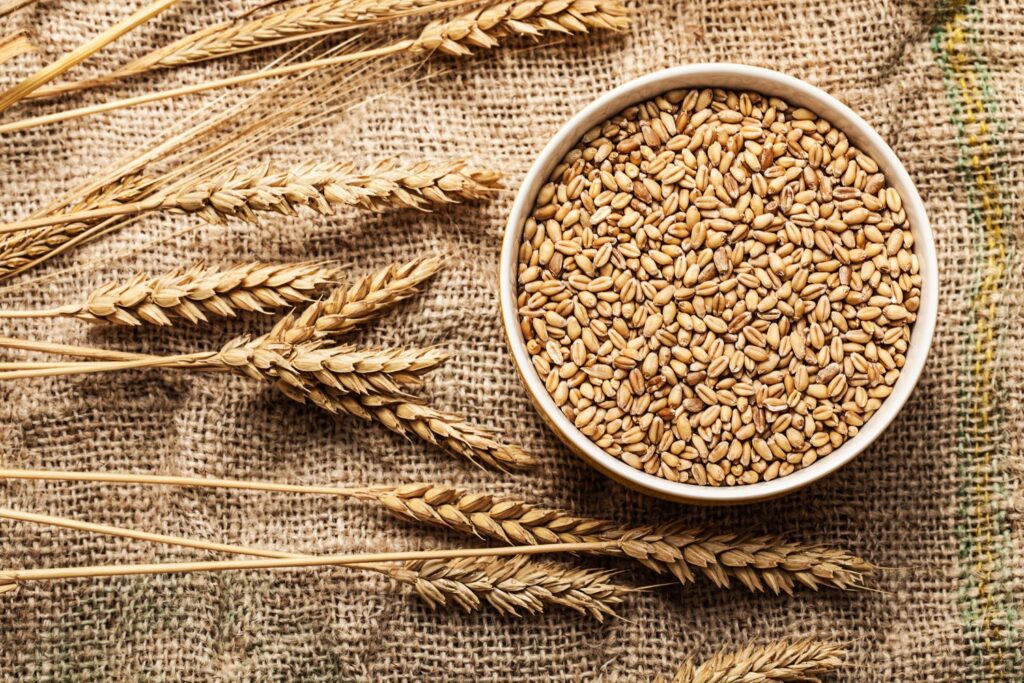
Wheat is among the plants mentioned in the Bible, symbolizing sustenance, provision, and abundance. In Matthew 13:30-32 Jesus explains how the wheat and the weed must grow together until the day of harvest. Here wheat is used to symbolize good fruit that must grow among weed (bad fruit). Jesus also referred to himself as the “bread of life,” (bread is made from wheat), highlighting the spiritual nourishment and sustenance He provides to believers (John 6:35).
Spiritual Significance
Wheat represents a good crop among bad ones. It also represents life and abundance. As we walk with God we should be the wheat among the weed. We must be the good trees of God bearing good fruit. This fruit must be shown in our character and our spiritual enlightenment. When this happens then we will both exemplify God and glorify Him at the same time.
Uses
Wheat is used in a lot of modern cuisines. It is a major source of carbohydrates which is a key source of energy for us. Wheat also has a high fibre content which has numerous health benefits including the prevention of certain types of cancers and other gut diseases.
2. Grapes
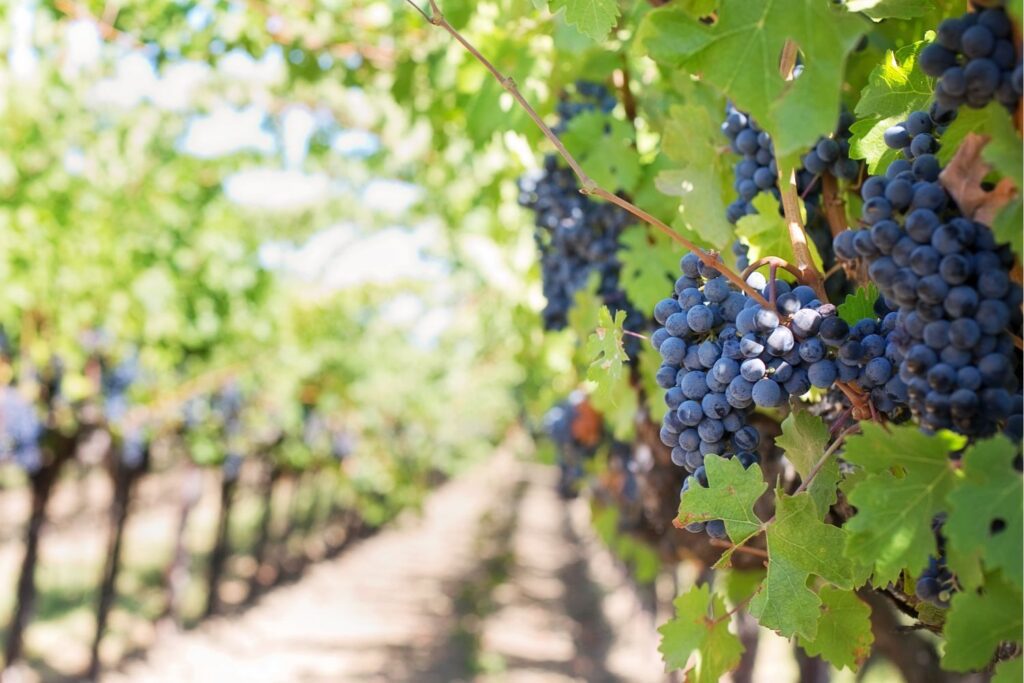
Grapes are among the most useful and tasty plants mentioned in the Bible . It is frequently mentioned to symbolizing abundance, blessings, and the joy of the Lord. The vineyard is a common metaphor for God’s people, and Jesus himself used the imagery of the vine and branches to illustrate the believer’s connection to Him (John 15:1-5).
In Deuteronomy 8:8, the vine is listed among the seven species in the good land that God promised the nation of Israel. This land was described as abundant and fruitful, with grapes growing in large clusters, as confirmed by Hebrew spies sent into Canaan (Numbers 13:23). These grape clusters were so immense that they required two men to carry them on a stick. It was considered a gift from God, meant to be enjoyed, and there was even a provision in Deuteronomy 20:6 stating that men should not go to war until they had tasted the fruits of their own grape harvest.
Uses
Grapes serve multiple purposes: they can be enjoyed fresh, dried to make raisins, pressed to produce wine, or used to make vinegar. Additionally, grape leaves play a role in some Middle Eastern cuisine. Historically, wine was sometimes diluted with stale cistern water to improve its drinkability.
3. Fig
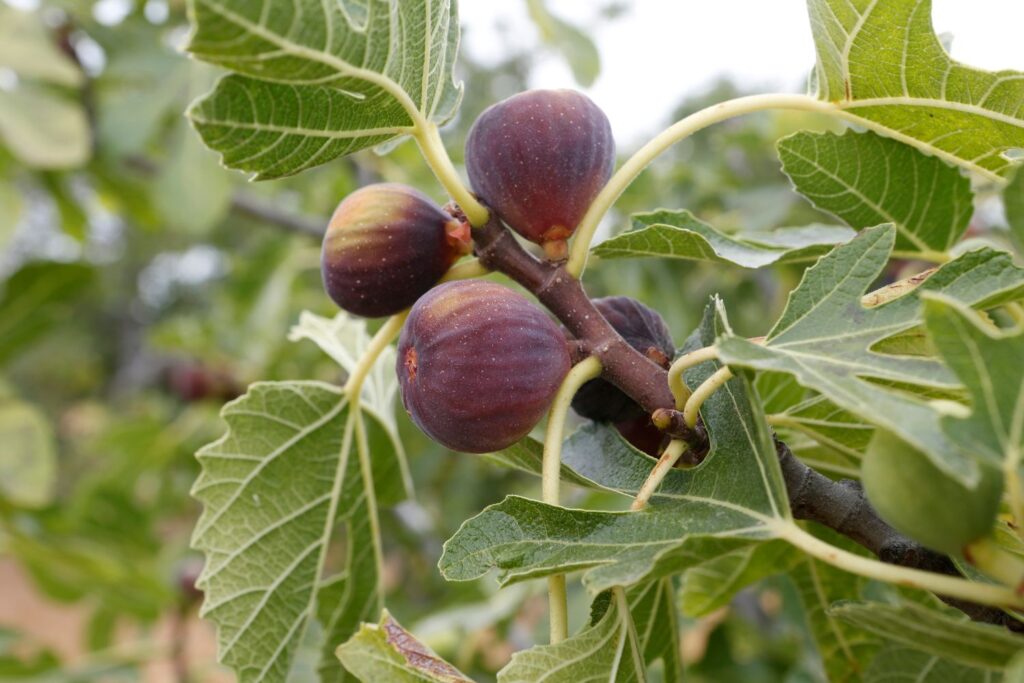
Among the plants mentioned in the Bible is the Fig tree. It is mentioned among the good fruits listed in Deuteronomy 8. They are mentioned in various contexts in the Bible, symbolizing peace, prosperity, and spiritual understanding. The fig tree also serves as a metaphor for Israel, with Jesus using the imagery of a fig tree to teach about spiritual fruitfulness and judgment (Matthew 21:18-22).
Spiritual Significance
The Fig is used to symbolize good fruit. It is mentioned in the bible to symbolize the good health of Israel both physically and spiritually. The Fig tree was also mentioned in Genesis where the Bible says that Adam covered himself with a Fig leaf. Adam needed a covering because he sinned against God and the Fig tree provided that covering. Here we see the important symbolism due to the importance of having a covering for our sins. Jesus Christ not only covers us from sin but He also washes us clean of it.
Uses
There are many uses of the Fig tree in our modern world. These include :
1. Promotes digestive health
2. Rich in antioxidants
3. May support healthy blood pressure
4. May support bone health
5. May improve diet quality and aid weight management
4. Olive
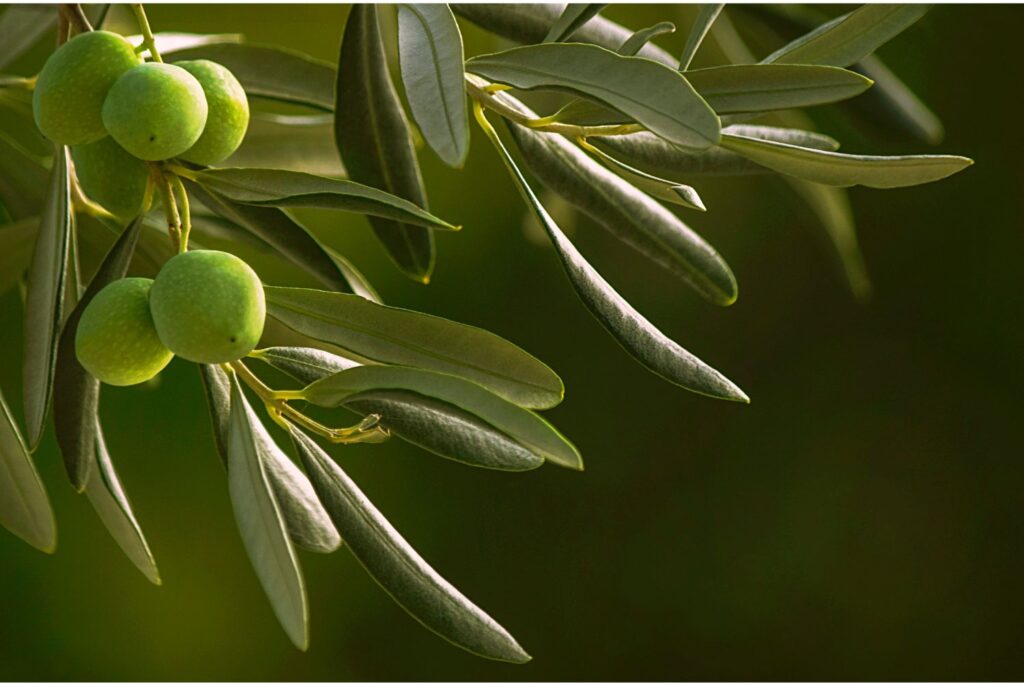
The Olive is one of the plants mentioned in the Bible which holds great spiritual and everyday benefits. The olive tree and its branch have long symbolized peace and reconciliation, dating back to the story of Noah’s flood. In Genesis 8:11, when the dove returned to Noah with an olive leaf in its beak, it signified new life sprouting on the earth, symbolizing peace and renewal. This gesture marked a new beginning for humanity, signifying peace and reconciliation with God.
The olive tree’s slow and resilient growth further implies establishment and peace. Remarkably, some of the world’s oldest olive trees still thrive in the Garden of Gethsemane on the Mount of Olives, serving as enduring symbols of peace and resilience.
Uses
The olive plant, with its versatile fruits and leaves, has numerous uses. Among these are;
1. Olive Oil Production: Olives are primarily cultivated for the production of olive oil, a staple ingredient in cooking, salad dressings, and various culinary applications.
2. Culinary Purposes: Both olives and olive oil are used in cooking, adding flavor and texture to dishes such as salads, pasta, bread, and sauces.
3. Table Olives: Some olive varieties are harvested and cured for consumption as table olives, enjoyed as a snack or used in various recipes.
4. Medicinal Uses: Olive oil has been used for centuries in traditional medicine for its purported health benefits, including its anti-inflammatory and antioxidant properties.
5. Traditional Remedies: Olive leaves and extracts are used in traditional medicine for their potential health benefits, including immune support and lowering blood pressure.
5. Pomegranate
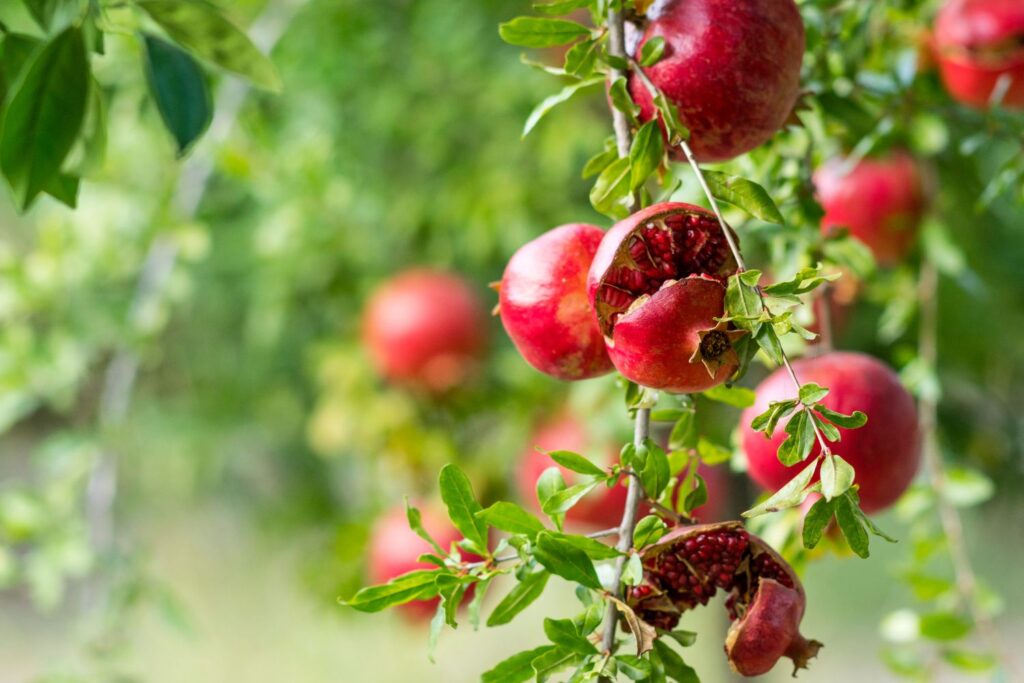
The Pomegranates was among the plants mentioned in the Bible in Deuteronomy 8. It is used as a symbol of fertility, abundance, and righteousness. The pomegranate’s many seeds represent the abundance of God’s blessings, while its vibrant red colour symbolizes the atoning blood of Christ (Exodus 28:33-34).
Uses
There are various uses of the Pomegranates plant/fruit. these include:
1. Used as a natural antioxidant
2. Used to relieve high blood pressure
3. Used to enhance athletic performance
4. Health to maintain and improve heart health
5 Eaten as a delicacy in many parts of the world
6. Date Palm
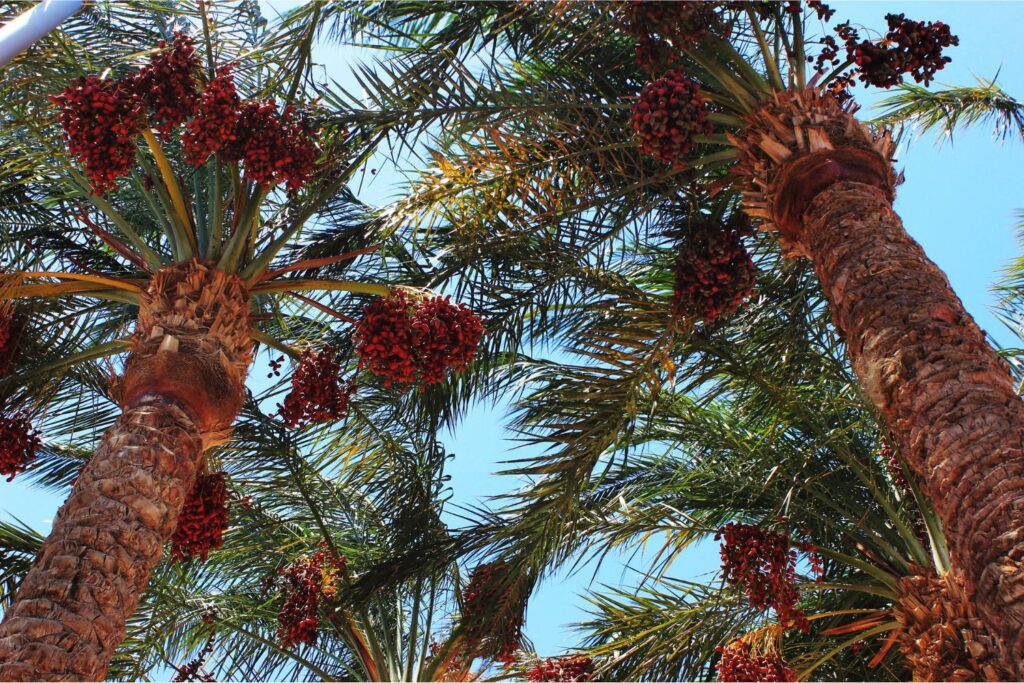
Date palms are mentioned more than 50 times in the Bible for their beauty, fruitfulness, and victory. They symbolize righteousness and prosperity, often associated with the promised land and God’s blessings (Psalm 92:12).
Spiritual Significance
Overall, palm dates are a versatile and nutritious fruit with a wide range of culinary, nutritional, and commercial uses. The date palm holds significant spiritual symbolism in various cultures and religions. Among these are:
1. They Symbolize Abundance and Fertility: The date palm is often associated with abundance, fertility, and prosperity. Its ability to bear fruit in harsh desert conditions symbolizes resilience and the provision of sustenance even in challenging environments. In many cultures, the date palm is a symbol of fertility and blessings, representing the abundance of God’s blessings and the promise of a fruitful life.
2. They Symbolize Strength and Endurance: The date palm’s tall and sturdy trunk, coupled with its deep roots, symbolizes strength, stability, and endurance. It serves as a reminder of the importance of standing firm in faith and weathering life’s storms with resilience and perseverance.
3. They Symbolize Renewal and Rejuvenation: The date palm’s ability to regenerate and produce new growth after harsh conditions, such as drought or pruning, symbolizes renewal, rejuvenation, and the cycle of life. It represents the opportunity for spiritual growth, transformation, and the renewal of one’s faith.
Modern Uses
1. Food: Dates are commonly consumed as a sweet and nutritious snack. They are rich in carbohydrates, fiber, vitamins, and minerals, making them a healthy energy source.
2. Medicinal Purposes: Dates have been used in traditional medicine for their potential health benefits, including improving digestion, boosting energy, and promoting overall health. However, more research is needed to confirm these effects.
3. Industrial Uses: Date pits can be processed to extract oil, which is used in cosmetics, skincare products, and industrial applications such as soap and detergent manufacturing.
7. Almond
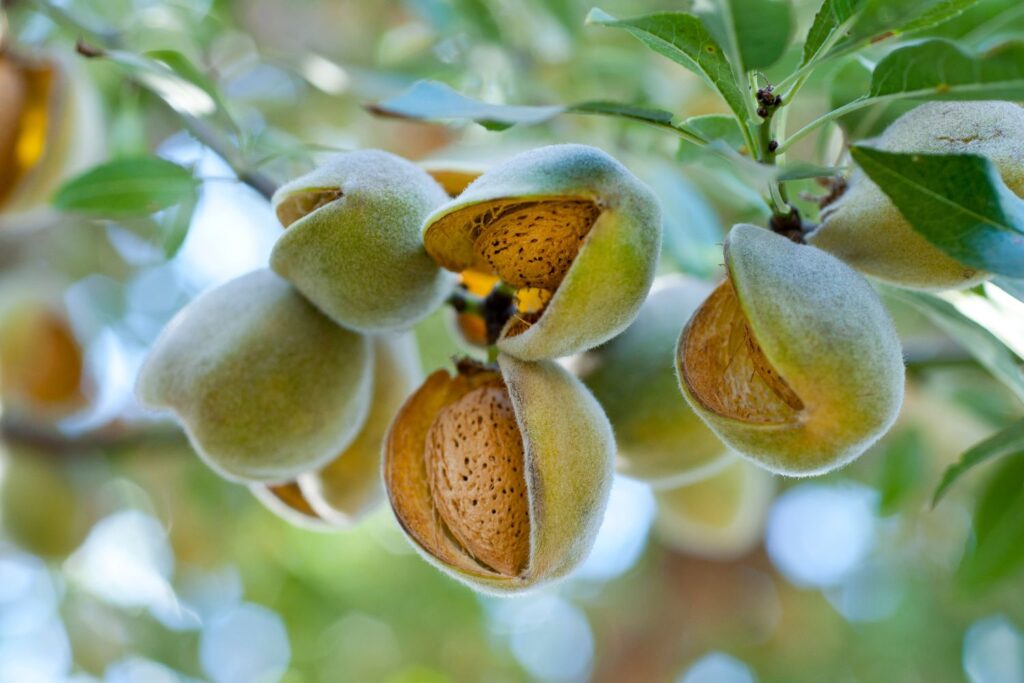
Almonds are mentioned in the Bible as symbols of watchfulness, early awakening, and the fulfillment of God’s promises. The almond tree’s early blossoms symbolize God’s faithfulness and the swift fulfillment of his word (Jeremiah 1:11-12).
Uses
Almonds, both the nuts and the trees they come from, have a wide range of uses. These Include:
1. Food: Almonds are a popular and nutritious snack, enjoyed raw or roasted. They are also used in various culinary applications, including baking, cooking, and as a topping for salads, yogurt, and cereal.
2. Almond Oil: Almond oil, extracted from almond kernels, is used in cooking, baking, and as a moisturizing ingredient in skincare products, cosmetics, and massage oils.
3. Almond Extract: Almond extract, made from bitter almond oil and alcohol, is used as a flavouring agent in baking, desserts, and beverages such as almond-flavored liqueurs and cocktails.
4. Almond Shells: Almond shells, the hard outer covering of the nut, can be ground into almond shell flour and used as a renewable and biodegradable material in various industrial applications, including livestock bedding, mulch, and as an abrasive in cleaning products.
5. Decorative and Ornamental Use: Almond trees are prized for their beautiful spring blossoms, making them popular ornamental trees in gardens, parks, and landscapes.
Spiritual Significance
The almond tree holds significant spiritual symbolism in various cultures and religious traditions: These include:
1. Promise of New Beginnings:The almond tree’s early blossoms also symbolize the promise of new beginnings, renewal, and resurrection. In Jewish tradition, the almond tree is associated with the holiday of Tu B’Shevat, the New Year for Trees, which celebrates the renewal of nature and the promise of a new agricultural cycle. Similarly, in Christian symbolism, the almond tree represents the resurrection of Christ and the promise of new life and salvation.
2. Symbol of God’s Faithfulness: The almond tree’s ability to produce abundant fruit even in challenging conditions symbolizes God’s faithfulness and provision. In the Bible, the almond tree is mentioned as a sign of God’s watchfulness and readiness to fulfill His promises. For example, in Jeremiah 1:11-12, God shows the prophet Jeremiah an almond branch as a symbol of His readiness to perform His word and bring it to fulfillment. This symbolism underscores the idea that God is always vigilant, faithful, and active in His care for His people.
8. Mustard

The mustard seed is used in the Bible as a symbol of growth from small beginning. It teaches us about the power of starting small by faith.
The mustard plant holds spiritual significance in various cultural and religious contexts. Overall, the mustard plant serves as a powerful symbol of faith, growth, transformation, and the kingdom of God in various spiritual, cultural, and culinary contexts.
Spiritual Significance
1. Faith and Growth: In Christian tradition, the mustard seed is often used as a symbol of faith and spiritual growth. Jesus used the imagery of the mustard seed in several parables to illustrate the transformative power of faith. In Matthew 17:20, Jesus tells his disciples, “Truly I tell you, if you have faith as small as a mustard seed, you can say to this mountain, ‘Move from here to there,’ and it will move. Nothing will be impossible for you.”
2. Kingdom of God: The mustard seed is also used metaphorically to represent the kingdom of God and the growth of Christianity. In the parable of the mustard seed (Matthew 13:31-32), Jesus compares the kingdom of heaven to a mustard seed, which starts as the smallest of seeds but grows into a large tree, providing shelter for birds. This imagery emphasizes the idea that the kingdom of God begins small but grows exponentially, welcoming and providing refuge for all who seek it.
Modern Day Uses
1. Healing : Mustard seeds and mustard oil are believed to have medicinal properties and protective qualities. Mustard plasters were once used for their warming and healing effects on the body.
2. Culinary and Cultural Significance: Mustard seeds and mustard greens are widely used in culinary traditions around the world. Mustard seeds are used as a spice, seasoning, or condiment in various dishes, sauces, and pickles, adding flavour and heat to recipes. Mustard greens are also prized for their nutritional value and are commonly used in salads, stir-fries, and soups.
3. Modern Medicine: Mustard seed oil is used topically as a warming and stimulating liniment to relieve muscular aches and pains. Additionally, mustard seeds are sometimes included in herbal remedies for their purported digestive and respiratory benefits.
9. Hyssop

Hyssop is mentioned in the Bible for its use in purification rituals, symbolizing spiritual cleansing and renewal. It was used in the Old Testament for sprinkling blood or water as a symbol of purification from sin (Leviticus 14:4-7).
Hyssop holds spiritual significance in several religious traditions, including Christianity and Judaism. Some of these include:
1. Purification and Cleansing: In the Old Testament, hyssop is frequently mentioned in the context of purification rituals. It was used as a cleansing agent in ceremonial rituals, particularly in the sprinkling of blood or water for purification from sin and impurity. For example, hyssop branches were used to apply the blood of the Passover lamb to the doorposts during the Exodus from Egypt (Exodus 12:22) and in the ceremonial cleansing of lepers (Leviticus 14:4-7).
2. Symbol of Spiritual Cleansing: Hyssop is often seen as a symbol of spiritual purification and forgiveness in Christian theology. In Psalm 51:7, King David writes, “Cleanse me with hyssop, and I will be clean; wash me, and I will be whiter than snow.” This verse is interpreted as a prayer for spiritual cleansing and renewal, symbolizing the removal of sin and guilt through God’s forgiveness and grace.
3. Associations with Jesus’ Crucifixion: In the New Testament, hyssop is mentioned in connection with Jesus’ crucifixion. During the crucifixion, a sponge soaked in sour wine was placed on a branch of hyssop and offered to Jesus to drink (John 19:29). This event is seen by some theologians as fulfilling the Old Testament prophecies and symbolizing the offering of spiritual refreshment and redemption through Jesus’ sacrifice.
Uses
In modern times, hyssop continues to be valued for its various practical uses, including:
1. Medicinal Purposes: Hyssop is still used in herbal medicine for its potential health benefits. It is believed to have anti-inflammatory, antimicrobial, and expectorant properties, making it useful for treating respiratory conditions such as coughs, colds, and bronchitis. Hyssop tea, extracts, and essential oils are commonly used as natural remedies for respiratory issues and to support overall immune health.
2. Aromatherapy: Hyssop essential oil is used in aromatherapy for its calming and uplifting effects on the mind and body. It is believed to help reduce stress, anxiety, and fatigue, promote relaxation, and improve mental clarity and focus. Hyssop oil can be diffused, added to bath water, or used in massage oils to enjoy its aromatic benefits.
3. Culinary Uses: While less common than in the past, hyssop leaves are still occasionally used as a culinary herb, particularly in Mediterranean and Middle Eastern cuisines. Its aromatic and slightly bitter flavour can enhance the taste of soups, stews, salads, and meat dishes. However, it should be used sparingly due to its strong flavour.
10. Cedar

Cedar trees are mentioned in the Bible for their strength, durability, and majestic beauty. They symbolize stability, protection, and the grandeur of God’s creation. Cedar wood was used in the construction of the temple and served as a metaphor for spiritual strength and security (Psalm 92:12).
Spiritual Significance
Overall, the cedar tree holds deep spiritual significance as a symbol of strength, sacredness, purification, wisdom, and eternal life in Jewish/Christian religious context. Some of these include:
1. Symbol of Strength and Stability: In biblical and ancient Near Eastern traditions, the cedar tree is often seen as a symbol of strength, stability, and endurance. Its towering height, deep roots, and durable wood make it a fitting symbol of steadfastness and resilience in the face of adversity. In Psalm 92:12, the righteous are likened to “a cedar of Lebanon,” emphasizing their strength and longevity.
2. Sacredness and Holiness: Cedar wood is highly valued for its fragrance, durability, and resistance to decay. In ancient Israel, cedar wood was used in the construction of sacred temples, palaces, and religious artifacts. Its association with sacred spaces and divine worship reflects its symbolic significance as a material worthy of honouring God.
Concluding Thoughts
These plants mentioned in the Bible are more than just botanical elements; they are symbols that carry deep spiritual significance. From wheat to cedar, each plant serves as a reminder of God’s provision, blessings, and presence in our lives. By understanding the spiritual symbolism of these plants, we can gain deeper insights into the Biblical narrative and the timeless truths it conveys.
As we marvel at the beauty of nature, let us also reflect on the spiritual lessons it teaches us, drawing closer to the God who made it all possible. Be blessed.








